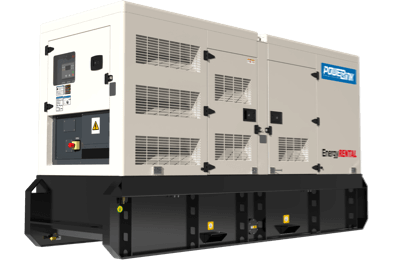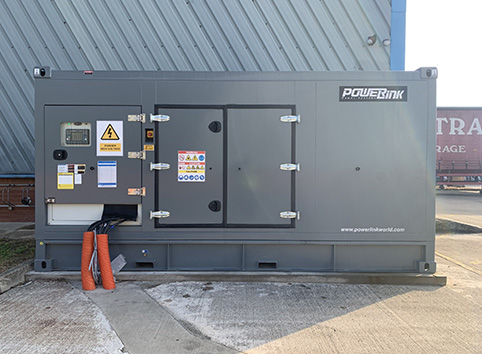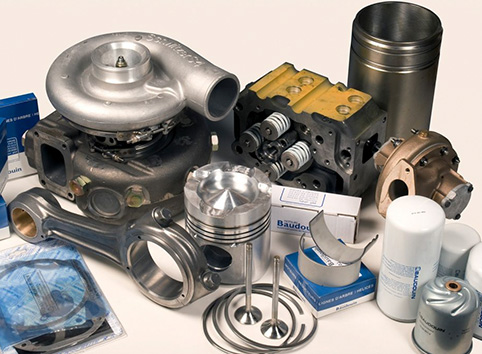
Global Standards Compliance

Wide Product Range

UK & China Manufacturing

Reliable Power, Anytime

Fast Delivery & Local Service
PowerLink is a leading developer and manufacturer of diesel generators, providing products that adhere to global emission and electrical standards. Our generators include non-emission, RK, RG, EP, EC, WCS, HV, QSV, Tier 3, Stage IIIA, EU Stage V, and Tier 4 Final models, all of which comply with CE and UL electrical standards.
With manufacturing plants in the UK and China, PowerLink ensures fast delivery and comprehensive local services to guarantee a continuous power supply. Our diesel generators are versatile, serving as emergency or backup power sources for temporary needs, or as a 24/7 main power supply for continuous operation. Our power range spans from 6 KVA to 4000 KVA, catering to a wide range of applications and requirements.
Product filter
Frequency
Voltage
Product Series
Power Range
Engine Brand
Structure
Emission
HV Series

The HV range of diesel generators, powered by Mitsubishi, Perkins, and Cummins engines, provides 1250 kVA to3250 kVA for reliable and efficient power.
Learn MoreQSV Series
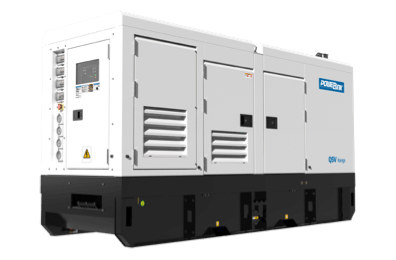
The QSV range of diesel generators, powered by PowerLink, Perkins, Kubota, and Cummins engines, provides 10 kVA to 2500 kVA for reliable and efficient power.
Learn MoreEC Series
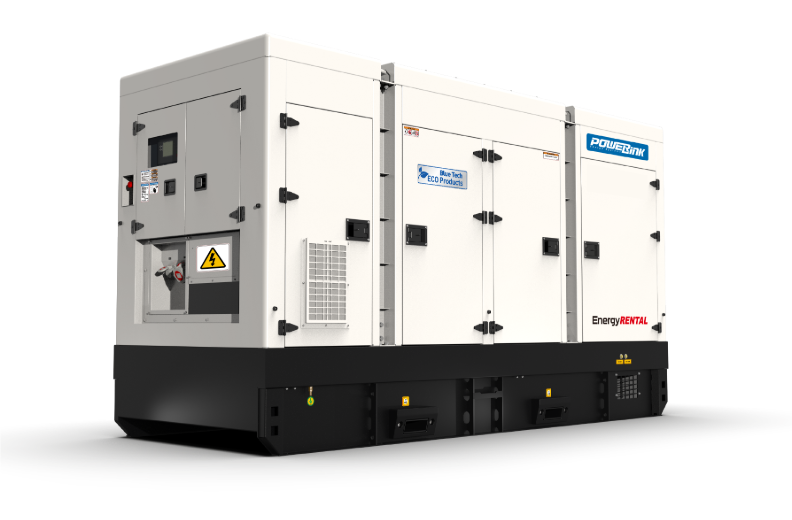
The EC range of diesel generators, powered by Cummins engines, provides 30 kVA to 1500 kVA for reliable and efficient power.
Learn MoreWCS Series
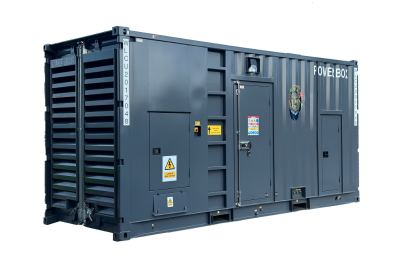
The WCS range of diesel generators, powered by Cummins engines, provides 10kVA to 3500kVA for reliable and efficient power.
Learn MoreEP Series
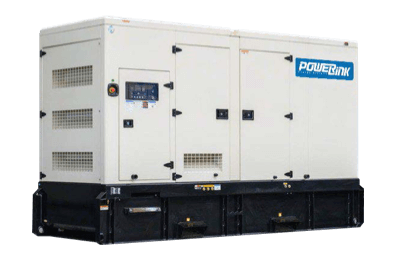
The EP range of diesel generators, powered by Perkins engines, provides 6kVA to 2250kVA for reliable and efficient power.
Learn MoreRK Series
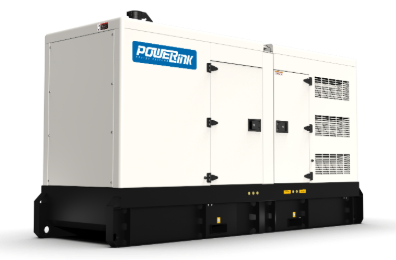
The RK range of diesel generators, powered by Kubota engines, provides 7kVA to 45kVA for reliable and efficient power.
Learn MoreESV Series
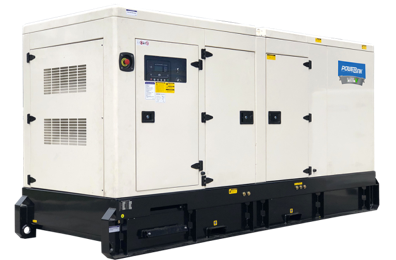
The ESV series diesel genset is a diesel generator in line with the EU STAGE V EMISSION STANDARD,
Learn MoreEB Series
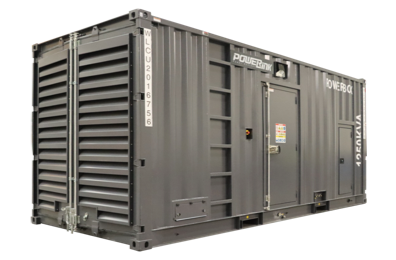
The EB series diesel genset is a reliable, clean, fuel-efficient, and cost-effective choice of power products…
Learn More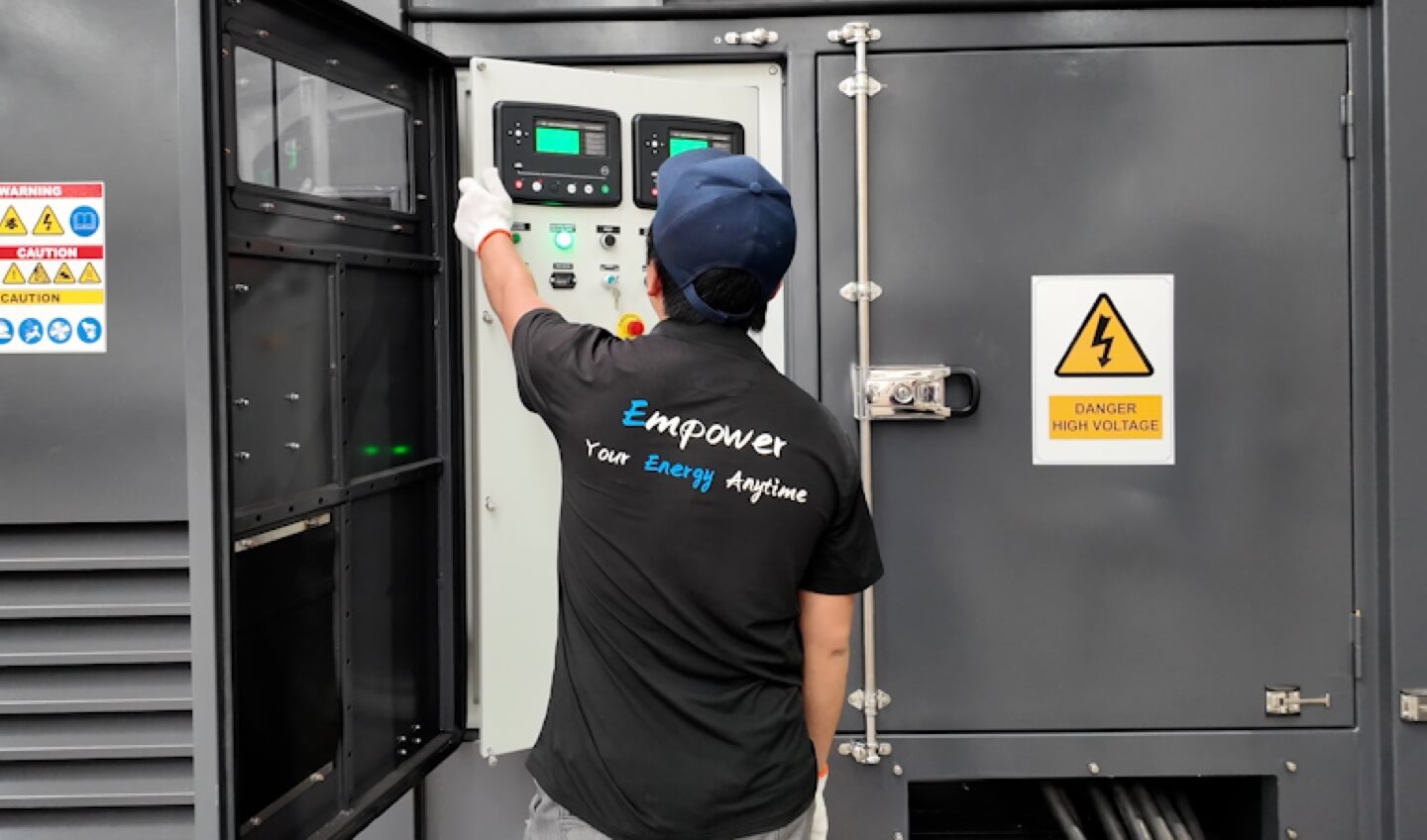
Main Features (Shortened)
- Wide Capacity Range: 6 kW–4000 kW, with options for parallel operation, grid connection, and power station setup.
- Modular Design: Compact, lightweight, easy to install, minimal footprint.
- Premium Components: International brand parts ensure reliability, safety, and stable performance.
- Full Protection: Advanced electrical safety compliant with CE, IEC, and more.
- Uninterrupted Supply: Large oil tank with auto-refueling for continuous power.
- Rugged Performance: Special air/exhaust system and remote radiator for harsh environments.
More Interests from PowerLink
Frequently Asked Questions
What is the biggest feature of PowerLink?
PowerLink is a professional manufacturer of power energy equipment with over 20 years of experience in research and development, manufacturing, global sales, and service. We attach great importance to R&D investment and efficiency management.
In the field of diesel power generation, we have accumulated years of application experience in various industries and service management experience. We believe that we are an advanced and visionary enterprise in this field, and we hope to create maximum value and profit for our customers and various investment institutions.
What are the characteristics of PowerLink diesel gensets?
Modular design, advanced technology, cost-effective. As a manufacturer, we have a very deep understanding of the equipment system, both the engine, generator and other hardware, as well as the automation control and other software, are developed and mastered by PowerLink.
What types of applications does PowerLink provide gensets for?
PowerLink provides customers with all types of continuous energy. We produce diesel units as small as 5KVA, ideal for homes and small retail properties, up to 3250KVA, which can provide electricity for commercial buildings, hotels, hospitals, mines and factories, and even feed back into the national power supply network.
Main application types:
1) Standby power supply, telecommunications, data centers and other places need diesel gensets to provide backup power, as a large grid supplementary energy for emergency backup.
2) Continuous power supply; Far away from the urban more remote places, the lack of electricity, the need for diesel generators to provide continuous power.
Applications: commercial, industrial, urban buildings, hotels, guesthouses, airports, hospitals, schools, residential communities, bathing centers, entertainment clubs, data centers, mines, docks…
Our generator can be manually or automatically started, with structural types including open, silent box, container, and trailer mounted generator sets.
The type of generator you need will vary depending on your power supply method, installation location, and whether it needs to operate continuously or only during power outages. To determine which type of generator is most suitable for you, please contact your local PowerLink dealer, who will be able to provide the appropriate product according to your requirements.
Why should you purchase a PowerLink genset?
PowerLink’s goal is to achieve 100% return customers, and our professional and dedicated team allows us to achieve this goal.
Some key reasons to choose PowerLink products are:
- Existing customers continue to comment on why our products have higher quality than competitors.
- We are a product manufacturer, and PowerLink power products are not only produced according to IS09001, but also use our own designed software system for closed-loop research and development, manufacturing, and service management to meet customer needs and help ensure stable quality.
- PowerLink has years of experience in providing various types of gensets.
- We provide turnkey solutions for the construction of large-scale power plants. Based on your actual working conditions, we can offer technical solutions, product selection, engineering design, construction, and after-sales service.
- In most cases, we can provide you with the fastest delivery time in the industry. We achieve this goal by keeping more products in stock and using advanced manufacturing processes while maintaining the highest quality.
- Our products are well-known within the industry, and we have sold our products to over 100 countries throughout our companies’ history.
- Our products are not only of reliable quality, but we are also committed to providing them at the lowest possible cost. Excellent supply chain and full chain manufacturing capabilities combine price with high-quality products, providing a perfect balance for your requirements.
What are the standard components of the genset?
- Diesel engine
- Alternator
- Elastic coupling
- PLC control system (parallel, grid-connected, isolated island)
- Main circuit breaker
- Radiator
- Fuel filter
- Air filter
- Oil filter
- Steel structure chassis
- Silencer
- Battery
- Daily fuel tank
- Oil filling system
- Sound-proof/container
- Distribution panel
- Optional accessories
How to calculate and analyse return on investment?
First, you need to determine the local energy structure, understand the cost of key elements such as electricity, gas, and fuel, as well as monthly energy cost expenditures. Please send this information to us, and our sales experts will provide you with a detailed investment return analysis.
How to choose your new power generation equipment?
Many customers need to consider the technical and economic feasibility of diesel power generation solutions. Usually the diesel genset is combined with the external large power grid, and the energy supply complements each other, which can improve the reliability and flexibility of the entire system.
To find a cost-effective, technically reliable and more environmentally friendly power generation solution, we recommend that you consider the following important factors when choosing a power generation equipment:
- The most important thing is the installation cost. Diesel genset solutions offer very competitive installation costs compared to other power generation systems, with a limited footprint for a single kilowatt project.
- Power generation efficiency. The power generation efficiency of diesel gensets directly affects the economy of the project. PowerLink diesel gensets are efficient and offer a high value.
- Manufacturing and commissioning time. PowerLink diesel gensets usually take 3 to 6 months from production time plus construction and commissioning time. Your cash on delivery time will be shorter if you have it in stock.
- Modular installation solution. Considering that the equipment is ultimately delivered safely to the installation site, the modular structure makes project installation easier and commissioning simpler and faster.
- Another very important factor in determining the choice of power generation equipment: the operating expenses associated with the equipment. These aspects need to be considered: service intervals, spare parts costs, downtime during maintenance, and the entire working cycle of the equipment before the overhaul. Based on our long experience, we offer multi-year service contracts for PowerLink gensets. This can help reduce the need for spare parts and can predict service times in advance, reducing operating costs throughout the engine’s working life.
- Help you select the most suitable equipment through the load analysis of the project. PowerLink’s wide range of diesel engines (5 to 3250KVA) will help you find the right solution for you.
- The surrounding environmental conditions will have an impact on the use of the equipment, thus affecting its actual power output capacity. In other words, in some cases, your power output may be much lower than the rated power. If you plan to operate equipment at high temperatures and/or altitudes significantly above sea level, be aware of this factor.
Where can I buy PowerLink products?
We have dealers in more than 100 countries worldwide, and you can contact local dealers to purchase products. In areas without dealers, you can contact our offices directly, and our sales experts will provide a one-on-one service with you.
Can the genset be used in harsh weather conditions?
PowerLink generators are designed to operate in harsh environments and extreme weather conditions (recommended environmental temperature: -25℃ to 50℃, altitude ≤1000m), but we do not recommend using them under harsh conditions. In possible situations, in order to extend the life of the generator and prevent short circuits and rust, it should be protected from the influence of components as much as possible.
What is a transfer switch?
A transfer switch is a panel that is connected to the site’s power distribution system to allow the use of a generator. It prevents the generator from feeding back into the main power supply, which can cause serious injury to line workers trying to restore utility power, etc.
Do you provide transfer switches and distribution equipment to allocate power?
PowerLink currently provides automatic transfer switches and power transmission and distribution systems, which can be customized according to the actual situation of the project.
How is the genset noise reduced?
The following three methods are usually used for noise reduction:
- Exhaust noise reduction: exhaust noise is the main source of generator noise, and a special muffler is usually selected for noise reduction.
- Reducing axial fan noise.
- Sound insulation and noise reduction treatment of the machine room and genset vibration isolation.
What is the backpower? What are the two serious consequences?
The case of self-provided generator sending power to the municipal network is called reverse power supply. There are two kinds of serious consequences:
- The municipal power grid is not cut off, and the city network power supply and the self-provided generator power supply produce non-synchronous operation, which will destroy the unit. If the capacity of the self-provided generator is large, it will also cause the municipal power grid to shake.
- The city network has been outage is being tested, and its self-provided generator provides power backwards. It will electrocute some of the inspection staff.
What are the conditions for the parallel use of two gensets, and what devices are used to complete the parallel work?
The condition of parallel use is that the voltage, frequency and phase of the two machines are the same at the moment, and the genset is commonly known as “three simultaneous”, and the special parallel device is used to complete the parallel work. It is generally recommended to use fully automatic cabinet and try not to manually parallel, because the success or failure of manual parallel depends on human experience, and the success probability is low.
What are the reasons why the water temperature is high and the alarm stops and cannot be used?
- Water tank leakage or insufficient water;
- The water temperature sensor is damaged.
- The water tank waterway dirt is too thick, or the heat sink oil is too much.
- Fan belt wear is too large, and there is insufficient pressure.
- Pump wear, pump water is insufficient.
- The thermostat opening Angle is not enough; there is a stuck phenomenon.
- The cylinder gasket is damaged, and the water channel is connected to the cylinder.
- The cylinder liner wears too much, and there is local water seepage.
- The ventilation of the equipment room does not meet the requirements.
- Engine overload operation;
- Excessive fuel supply (including engine weakness).
How is the genset used in coordination with the main power supply?
Stable commercial power is supplied to the power load through cables. When the main power supply is interrupted due to a power outage, a signal is sent from the transfer switch to the genset, and then the genset starts and sends the generated power to the load. When the main power supply is restored, the switch will cut off the power supply of the genset and restore it to the main power supply.
How long is the product delivery cycle?
For standard products, from the time the customer places the order until the product is shipped, depending on the power and series, it generally takes 2-6 months.
How is the equipment transported?
PowerLink collaborates with various contracted carriers to transport goods to the specified site in the contract. We provide two options for customers: truck delivery or full-service delivery, including unloading the equipment and adopting appropriate transportation plans based on the project’s actual situation.
What do you need to know when installing a genset?
When installing a genset, the following aspects should be noted:
- The installation site should have good ventilation, with sufficient air intake at the generator end and good exhaust at the engine end.
- The surroundings of the installation site should be kept clean, and items that can produce corrosive gases and vapours such as acidic and alkaline substances should be avoided nearby. Fire-fighting equipment should be available where possible.
- If used indoors, the exhaust pipe must be vented outdoors, and the pipe diameter must be greater than or equal to the exhaust pipe diameter of the muffler. The number of elbows in the connected pipe should not exceed three, to ensure smooth exhaust. The pipe should be inclined downward at 5-10 degrees to prevent rainwater from entering. If the exhaust pipe is vertically installed, a rain cover must be added.
- When using a concrete foundation, use a spirit level to ensure its levelness during installation, so that the unit is fixed on a level foundation. Special shock-absorbing pads or base bolts should be used between the unit and the foundation.
- The genset’s outer shell must have a reliable protective ground. For generators that require a neutral point directly grounded, a professional should perform the neutral point grounding and be equipped with lightning protection devices. It is strictly forbidden to use the grounding device of the power grid to directly ground the neutral point.
- The bidirectional switch between the generator and the power grid must be very reliable to prevent reverse power transmission, this switch must also be tested and approved by the local power department.
- The wiring for starting the battery must be secure.
How to do equipment commissioning?
Our factory and distribution network have professional debugging engineers who can provide equipment debugging services worldwide. They can provide remote technical support online or conduct on-site debugging locally.
Precautions before equipment commissioning?
Before commissioning each piece of equipment or project, on-site inspections must be done in advance. You can obtain an inspection checklist from the after-sales department, follow the requirements, and provide videos and photos to the after-sales department.
How to protect the AC generator of the genset?
Three different methods can be used to protect the AC generator of the genset:
- Thermal-magnetic protection (TMP) – TMP protects the AC generator from overload and short circuit effects. If overloaded, TMP will shut off after a specified period which depends on the type of overload. The higher the overload, the shorter the time needed for TMP to shut off, while in the case of a short circuit, TMP will always shut off immediately.
- Leakage protection – When a leakage fault between phases and ground exceeds 30mA, 100mA, or 300mA, ELP will automatically interrupt the circuit, depending on the type of leakage switch used. In the case of indirect contact, ELP can protect personnel from electric shock and additionally, ELP can also be used as a short-circuit protection. In most cases, an earthing pin is required!
- Insulation protection – An insulation protection relay is used to measure and protect the insulation (actually resistance) between a direct, ungrounded AC power source and a freely selectable grounded area (i.e. the frame or mass of a genset). In this way, users can be protected from electric shock when accessing the normal user-friendly area of the machine. When insulation failure occurs, the tension of the AC generator can be interrupted, the engine can stop, or an alarm can be activated. In this case, no grounding pin is required!
When and how to maintain and repair the genset?
First, every piece of equipment you purchase will have a maintenance schedule, which can be used to schedule maintenance based on established timeframes. The frequency and type of services required to maintain a PowerLink genset will depend on many factors, including the generator’s usage, operating environment, and the load it needs to carry.
As an owner, it is your responsibility to ensure that comprehensive servicing is provided regularly, and you need to conduct frequent visual inspections at least every 2-3 months to check that everything is functioning properly, ensure that any malfunctions or repairs are recorded. A comprehensive service should be performed every 12 months, including replacing filters and lubricants, etc.
Most start-up failures are the result of equipment that has not been tested regularly, so we recommend that you check the generator once a week. We have a professional after-sales service team that can dispatch engineers to provide on-site services worldwide. Service types include one-time service, contract-based services, or services provided by locally certified third-party organizations, depending on customer requirements.
What happens if I overload the generator?
A genset should not be continuously overloaded after operation (it is recommended to run at full load) but should be in an overloaded state for a very short time, especially during the start-up period. If a genset is operated for a long period of time and is in an overloaded state (i.e., exceeding its maximum rated value), several things can happen.
These include:
- Overheating of the cooling system.
- Overheating of the AC generator winding.
- Low oil pressure due to decreased oil viscosity.
- Shortening of the generator’s working life.
All engines are designed to operate under different loads, ranging from maximum to minimum. When light loads (minimum load) continue for a long period of time, causing the engine to not be able to recover to a normal operating temperature, which can cause problems within the generator, such as the formation of varnish, which means that the oil normally burned in the cylinder is heated and forms a layer of paint on the cylinder sleeve. If light loads continue, visible blue smoke will appear, and the engine will require maintenance work to clean or replace the liner.
How to purchase spare parts?
We have developed a complete spare parts supply plan for every product that leaves our factories, which is managed by a professional parts sales team. We have a convenient online sales platform for parts selection or you can also contact local dealers or directly contact factory parts sales personnel, and we can quickly deliver parts to your location globally according to your needs. If needed, we will also dispatch professional service engineers to the site to replace parts.
What are the starting modes of diesel engines?
The common starting methods of diesel engines are divided into manual starting (hand crank), electric starting (lead battery), gas starting and hydraulic starting motors. Among them, the electric starting mode is the most popular device of diesel engine, which is widely accepted by the market because of easy use, simple maintenance and stable work, and the complete electric starting system needs: electric motor, battery, control components, cables, chargers and so on. For large power diesel generators usually use compressed air to start, divided into compressed air and air motor start.
Ultra-low temperature operation of diesel gensets
Diesel generator sets require preheaters such as water jacket preheaters, fuel oil preheaters, battery heaters, and space heaters to operate at ultra-low temperatures (such as below minus 10°C).
Does the diesel generator set need to add some fuel when it is shipped out of the factory?
All diesel units are not refilled with diesel when they leave the factory
Is the diesel generator set filled with engine oil during factory transportation?
All diesel units are filled with engine oil before leaving the factory.
Is the diesel generator set filled with coolant during factory transportation?
All diesel units are filled with coolant before leaving the factory.
Does every diesel generator set need to undergo testing before leaving the factory?
Yes, during factory testing, diesel from an external fuel tank is used for testing.
Unit grounding lightning protection problem
Grounding bolts are installed on the chassis of the unit. Customers can connect their own grounding network to the grounding bolts. The lightning arrester is optional equipment.
If three sets of generator sets are equipped to supply power to the terminal, and the grid is not connected to the Internet mode, if the power grid is cut off, the generator set starts, at this time how much electricity the generator set needs to generate is controlled by what? Is it controlled by an electrical terminal?
These are two questions. Connected to the Internet and no external network, the working mode of the unit is not the same. When there is an external network, the grid is not connected to the Internet, most of the unit adopts the power output method, and the user’s power management center determines how much electricity the unit generates. When there is no external network, most units follow the load, and the load determines how much electricity the unit generates.
Can two different types of generators achieve automatic synchronization/load sharing and other power?
Two different types of generators to achieve automatic synchronization/load sharing and other power, just with AVR and current transformer and other accessories, can achieve automatic synchronization, load sharing and other functions. Two different types of generators to achieve automatic synchronization/load sharing and other power, just with AVR and current transformer and other accessories, can achieve automatic synchronization, load sharing and other functions.
Can three phase and single phase of diesel generator set be switched? Can it be used at the same time?
The switch between the three-phase generator set and the single-phase generator set can be used, which mainly depends on whether the power of the generator is large enough and whether the three-phase balance can be maintained. When the power of the generator is large enough to meet the total power needs of all electrical equipment, single-phase and three-phase electricity can be used simultaneously.
Is your unit controller easy to insert and use, or does it need to be reconfigured according to the machine size?
Usually in accordance with the standard form to configure, easy to plug in and use, such as special customization needs, can be customized design.
Warranty period
Please request the warranty manual document from the agent, which contains detailed explanations of the warranty policy.
Regarding the fuel tank of the diesel generator set
1. All open-type units have single-layer oil tanks, that is, the top plate of the oil tank is welded to the chassis, and the bottom plate and side plates of the oil tank are the bottom plate and longitudinal beams of the chassis. Open units with a main power exceeding approximately 750KW are standard equipped with a chassis fuel tank. For specific details, please refer to the corresponding type spectrum table.
If you want to make a double-layer fuel tank, you can also do it by issuing a purchase order for customized products.
2. The appearance style of the silent unit is divided into three types:
2.1 POWERLINK units (excluding QSV series) are equipped with double-layer chassis fuel tanks, with the chassis as the second layer and an independent single-layer fuel tank installed inside the chassis, making it a double-layer system.
The QSV series has a power range of 10KVA-1000KVA and adopts a silent box structure design with a built-in double-layer fuel tank.
3. Container unit: All are independent single-layer daily fuel tanks (optional double-layer fuel tanks), without chassis fuel tanks
3.1 For a 20 foot container unit, there are two types of radiators: remote radiators and radiators that are integrated with the chassis.
3.2 For 40-foot container units, there are two types of radiators: remote radiators and radiators that are integrated with the chassis.
Note: The daily fuel tank comes with a single-layer structure as standard, but a double-layer structure is optional. Please refer to the technical parameter file for the capacity size.


